Celebrating Mining Week in British Columbia
This week we celebrate mining in British Columbia. From May 3-9 events will be held across British Columbia to highlight the importance of mining to British Columbians.
B.C.’s mining industry is one of the pillars of our economy. In 2013, the year for which most recent data is available, the mining sector contributed $8.5 billion to BC’s GDP and employed 10,720 British Columbians. It further contributed $511 million in tax revenues to provincial coffers. Mining forms the backbone of many rural communities throughout the province, supplying us with the resources we need to enjoy the prosperity we are so fortunate to have in B.C.
Our mining industry continues to play a pivotal role in facilitating the transition to a 21st century economy. For example, without metallurgical coal, we cannot manufacture steel. Without graphite, we cannot build lithium ion batteries.
It is for this reason that I travelled to the Kootenays in April to learn more about the opportunities and challenges facing our Mining Industry in B.C. What follows is a brief report on two tours I did while I was there.
Teck Resources Ltd Metallurgical Coal Operations
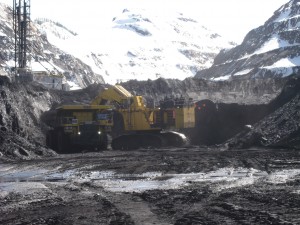 Employing roughly 7,960 people and contributing $6.5 billion in gross mining revenue, Teck Resources Ltd is Canada’s largest diversified resource company, with many of its assets in metallurgical coal mining. I reached out to Teck Resources because I believe it’s important to have a clear understanding of British Columbia’s coal industry.
Employing roughly 7,960 people and contributing $6.5 billion in gross mining revenue, Teck Resources Ltd is Canada’s largest diversified resource company, with many of its assets in metallurgical coal mining. I reached out to Teck Resources because I believe it’s important to have a clear understanding of British Columbia’s coal industry.
Five of Teck Resources’ thirteen mines are located in the Elk Valley in the Kootenays where they extract metallurgical coal. While I was there, I had the opportunity to meet with representatives from Teck Resources and to tour their Coal Mountain operations.
Those who have read my previous coal-related posts know how important I believe it is to distinguish between thermal coal, which is used for coal-fired power plants, and metallurgical coal, which is used in the production of steel. Metallurgical coal is used to produce coke. This is done via heating the coal to very high temperatures (>1000°C) in the absence of oxygen. The resulting almost pure carbon is then mixed with iron ore to create the molten iron that is turned into steel.
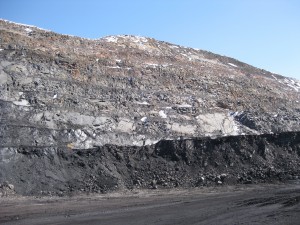 Thermal coal, on the other hand, is the single biggest contributor to greenhouse gas emissions in the world. It is also the most widely available of all fossil fuels and we produce very little of it here in British Columbia. Thermal coal has smaller carbon content and higher moisture content that metallurgical coal thereby precluding its use in steel making.
Thermal coal, on the other hand, is the single biggest contributor to greenhouse gas emissions in the world. It is also the most widely available of all fossil fuels and we produce very little of it here in British Columbia. Thermal coal has smaller carbon content and higher moisture content that metallurgical coal thereby precluding its use in steel making.
The overwhelming majority of thermal coal that is shipped through British Columbia ports is sourced from the United States. That coal travels through B.C. ports because Washington, Oregon, and California have taken a stand to curb their own thermal coal exports. To quote from the governors of Oregon and Washington “We cannot seriously take the position in international and national policymaking that we are a leader in controlling greenhouse gas emissions without also examining how we will use and price the world’s largest proven coal reserves.” Here they were acknowledging that the United States has the largest reserves of thermal coal in the world (237,295 million tonnes) and that their domestic market is dropping as natural gas generation increases and more renewables are brought on stream.
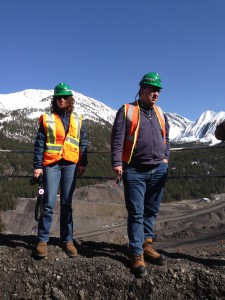 Teck Resources produces metallurgical (not thermal) coal here in British Columbia. The fact is that metallurgical coal is essential for building everything from windmills to electric cars because without it, you cannot have steel. Teck Resources’ five metallurgical coal mines in the Elk Valley employ about 4,000 people and together contributed $140 million in taxes to the province in 2014. Touring Teck Resources’ Coal Mountain mining operation offered an excellent view into the scale and complexities of modern metallurgical coal mining in British Columbia. I was extremely impressed by steps Teck has taken to ensure their metallurgical coal operations were as environmentally sensitive as possible. These include their approaches to reclamation, greenhouse gas reductions, acquisition and preservation of parkland for future generations, and their state of the art water treatment operations that will commence in the Fall of this year.
Teck Resources produces metallurgical (not thermal) coal here in British Columbia. The fact is that metallurgical coal is essential for building everything from windmills to electric cars because without it, you cannot have steel. Teck Resources’ five metallurgical coal mines in the Elk Valley employ about 4,000 people and together contributed $140 million in taxes to the province in 2014. Touring Teck Resources’ Coal Mountain mining operation offered an excellent view into the scale and complexities of modern metallurgical coal mining in British Columbia. I was extremely impressed by steps Teck has taken to ensure their metallurgical coal operations were as environmentally sensitive as possible. These include their approaches to reclamation, greenhouse gas reductions, acquisition and preservation of parkland for future generations, and their state of the art water treatment operations that will commence in the Fall of this year.
Now, Teck Resources does not only produce metallurgical coal. They also own and operate Highland Valley Copper and the integrated zinc and lead smelting facility in Trail. If we actually include all of Teck Resources’ operations in our province, this one company accounted for 21% of all BC exports to China in 2013. That year Resources directly employed 7,650 full-time workers with an average salary of $100,000 per year. They are expanding their operations in British Columbia and presently there are 28 job openings within the company.
Eagle Graphite
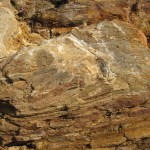 Whereas Teck Resources is British Columbia’s largest mining company, many of B.C.’s junior mining companies are quite a bit smaller. Eagle Graphite Mine is one of them.
Whereas Teck Resources is British Columbia’s largest mining company, many of B.C.’s junior mining companies are quite a bit smaller. Eagle Graphite Mine is one of them.
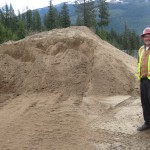 Located in the Slocan Valley, Eagle Graphite is one of only two flake graphite producers in North America and the only one in British Columbia. Graphite is an essential component of lithium ion batteries, which are used in electric vehicles. In fact, about 95% of a lithium battery is made up of graphite. About 50 kilograms of graphite is contained in an electric car, 10 kilograms in a hybrid vehicle and 1 kg in an electric bike. Laptops and mobile phones contain about 100 grams and 15 grams, respectively.
Located in the Slocan Valley, Eagle Graphite is one of only two flake graphite producers in North America and the only one in British Columbia. Graphite is an essential component of lithium ion batteries, which are used in electric vehicles. In fact, about 95% of a lithium battery is made up of graphite. About 50 kilograms of graphite is contained in an electric car, 10 kilograms in a hybrid vehicle and 1 kg in an electric bike. Laptops and mobile phones contain about 100 grams and 15 grams, respectively.
By the end of the decade, graphite demand for electric vehicles produced in North America is projected to increase substantially, far exceeding current supply. The team at Eagle Graphite has been working hard to take advantage of this projected supply gap by proving their reserves and developing methods to efficiently extract graphite from their quarry reserves. And one of the interesting tidbits I picked up on the tour was that golf course grade sand is the by-product of producing graphite!
Touring Eagle Graphite offered a helpful insight into the opportunities and challenges faced by smaller mining firms.
Summary
My brief trip to the Kootenays highlighted the diversity of resource opportunities that have been capitalized upon in the area. What impressed me most at the locations I visited were the steps taken by all companies involved to ensure sustainability of their industry for decades to come with minimal environmental footprint. Whether it be Teck Resource’s Elk Valley coal operations or their Trail smelter powered by the Waneta Dam, Eagle Graphite’s small operation, Canfor’s Elko Mill, or Columbia Power’s Waneta Expansion Project, everyone I met was beaming with pride at the work that they do, their safety records, and the care they take to ensure their operations are as clean and sustainable as possible. After all, these people are locals and the industrial operations are literally in their backyard.
Finally, a highlight of my trip truly had to be that I can now say triumphantly “I’ve been to Yahk and Back”.

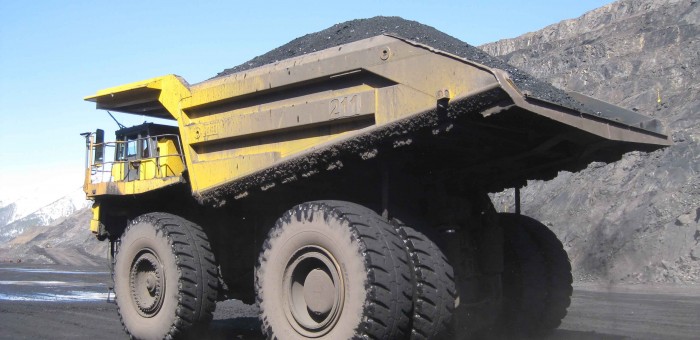
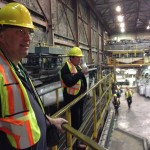
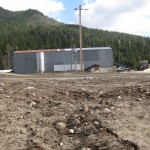
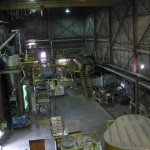
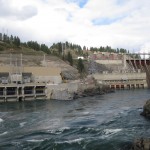
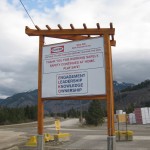
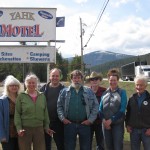



5 Comments
Thanks Andrew. It is very refreshing to see a piece so completely devoid of dogma and ideology. We have loved living in the Netherlands for the past few years and experiencing decisions made purely by pragmatism. If it works let’s do it, if it doesn’t work then forget it.
Thanks Martin, I sincerely think we can do it in BC too. It will take some work but I think British Columbians are ready.
Andrew,
I agree mining is a big part of BC’s economy . It makes me wonder though why we don’t have more bite in our Mining Inspectors arsenal.
I live on Quesnel Lake and after the Mount Polley spill we learned the
mining inspectors relied on the mines self reporting between inspections. Also when a issue came up they wrote a report requesting it be corrected .If it wasn’t they wrote another request.
They should have the ability to shut a mine down if there is a huge
issue that needs to be dealt with immediately. We now know what the result is if it isn’t dealt with
Agree Craig, cuts to compliance and enforcement sections in the MOE and MEM need to be reversed.
I grew up at Kimberley when the Sullivan mine was running wide open, at the time it was the worlds largest producer of base metals including lead, zinc, silver and a bit of gold. Later I worked at the Giant Mascot Mine near Spillamacheen, ore was such high grade it was called “cubite” I am friends with Rory Miller at Eagle Graphite, and I am a shareholder. I owned a long-haul trucking co. based out of Langley ’til I retired, now write mystery novels and truck – related stories. http://www.truckerbooks.co I would like to be on your mailing list. Ted Campbell